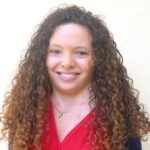“Humanity will not perish in an atomic nightmare – it will suffocate in its own waste” said the Nobel Prize winner Niels Bohr. Despite his thoughts that “it is difficult to make predictions, especially about the future”, he could not have been any more right. So are many countries realizing this now. While this has been a global issue for several decades, many have been raising the alarm only recently. For example, as Moscow is drowning under 70 million tons of waste each year which lead to putrid smells and toxic gases inconveniencing the population, the government is now promising to open five waste treatment plants [1].
Some municipalities may have found a viable long-term remedy for the past damage. The city of New York started to develop a park above the world’s largest human made construction, the Fresh Kills landfill [2]. Harvesting methane on site provides enough energy for the heating of 20’000 local homes and the once visible from space landfill will become home for football fields, recreational activities and hiking trails.
![Figure 1 - Fresh Kills landfill in New York City in 2011 [3]](/wp-content/uploads/2018/06/Figure-1-Fresh-Kills-landfill-in-New-York-City-in-2011-3-300x201.jpg)
Figure 1 – Fresh Kills landfill in New York City in 2011 [3]
Some countries manage, using incineration, to provide heating to 20% of their population while providing electricity to 1 household out of 8. This is the case of Sweden where there is a shortage in waste in comparison to the capacity of their incineration plants, leading to a waste import from their neighbours [5]. Yet, although appealing, incineration is a process that most environmentalists fight against following toxic emissions. Sweden argues that they have managed to reduce their emissions to an acceptable level, but 5 to 10 years of operation are required for accurate emission measurements.
![Figure 2 Fresh Kills Park project in New York City [4]](/wp-content/uploads/2018/06/Figure-2-Fresh-Kills-Park-project-in-New-York-City-4-300x244.png)
Figure 2 Fresh Kills Park project in New York City [4]
An alternative renewable option is using an unlimited free source of energy: the sun. This means capturing solar energy using concentrated solar thermal systems and delivering it to the gasification process, as described in Figure 3. The overall process, that may be a way to prove the famous physicist wrong, will be depicted in the next blogpost. Stay tuned!

Figure 3 – Solar-driven upcycling of waste
References
[1]: Capital. Submergée de déchets, Moscou étouffe. [Internet]. 2018 [cited 05 June 2018]. Available from: https://www.capital.fr/economie-politique/submergee-de-dechets-moscou-etouffe-1287923 [2]: New York Public Radio. Ten Years after Closure, Fresh Kills is Still a Landfill in Transition. [Internet]. 2011 [cited 04 June 2018]. Available from: https://www.wnyc.org/story/118960-blog-fresh-kills/ [3]: FreshkillsPark. Landfill-to-Park Timeline. [Internet]. 2017 [cited 07 June 20178]. Available from: http://timeline.freshkillspark.org/ [4]: Inventor Spot. New York will Transform a Landfill into a Solar Plant. [Internet]. 2016 [cited 03 June 2018]. Available from: http://inventorspot.com/articles/new_york_will_transform_landfill_solar_plant [5]: Le Monde. A force de recycler, la Suède doit importer des déchets. [Internet]. 2012 [cited 02 June 2018]. Available from: http://ecologie.blog.lemonde.fr/2012/09/22/a-force-de-trop-recycler-la-suede-doit-importer-des-dechets/
About the Authors:

Marco Gigantino is our ESR8. After studying chemical engineering in Italy and in the UK, he moved to Switzerland to start a PhD at ETH Zürich. He focusses on thermochemical storage of solar energy for the application of gasification of refuse-derived fuels (RDF). You can contact him at . |

Léa Lurois: She is our ESR7. She comes from northern France and, after living in the UK and the US, she moved to Switzerland as a PhD candidate at ETH Zürich. Her main activity is related to the collection of solar thermal energy using a solar receiver. You can contact her at . |



One comment
Pingback: Following the sunlight going into a new era! – EU Training Network for Resource Recovery Through Enhanced Landfill Mining